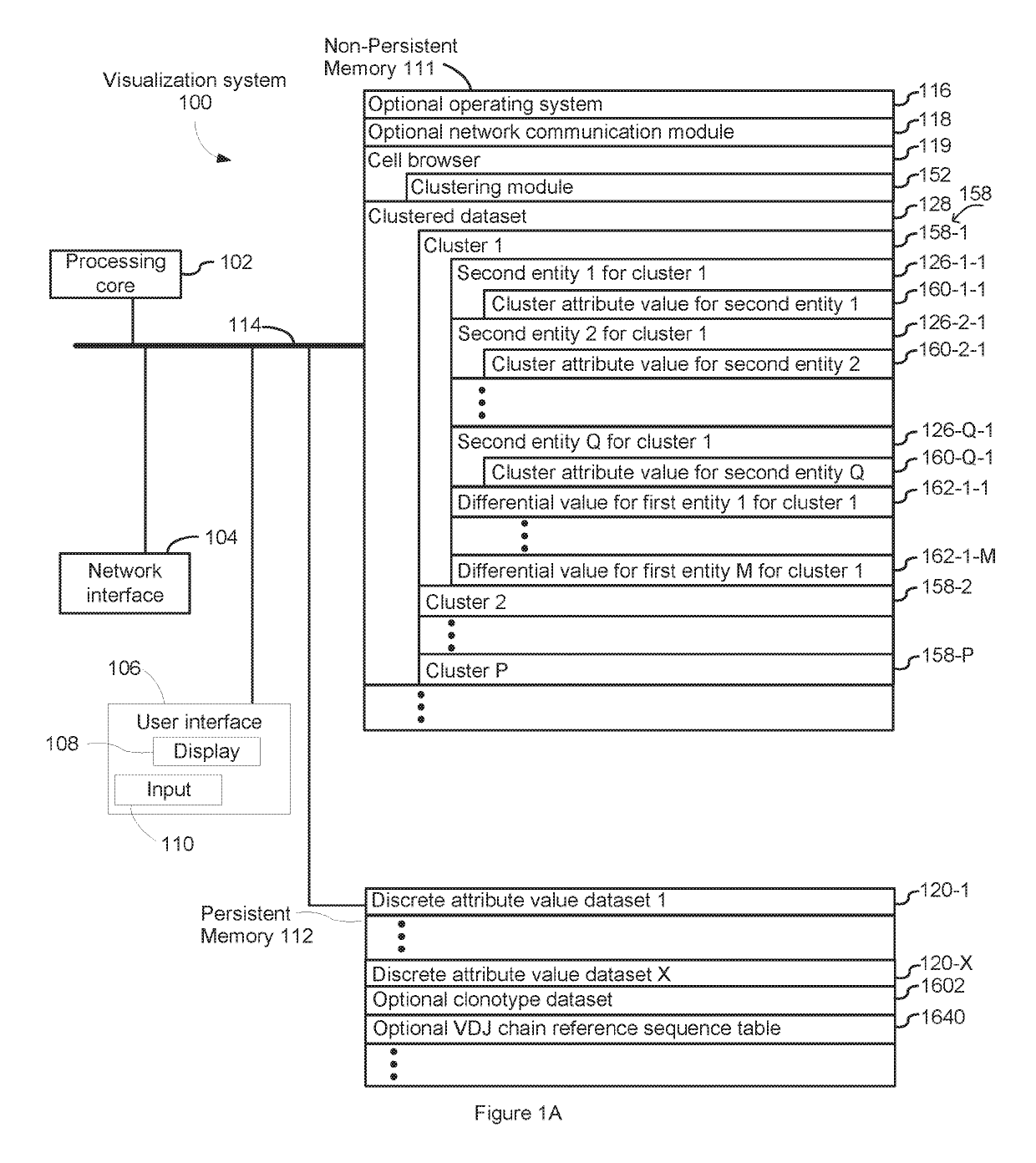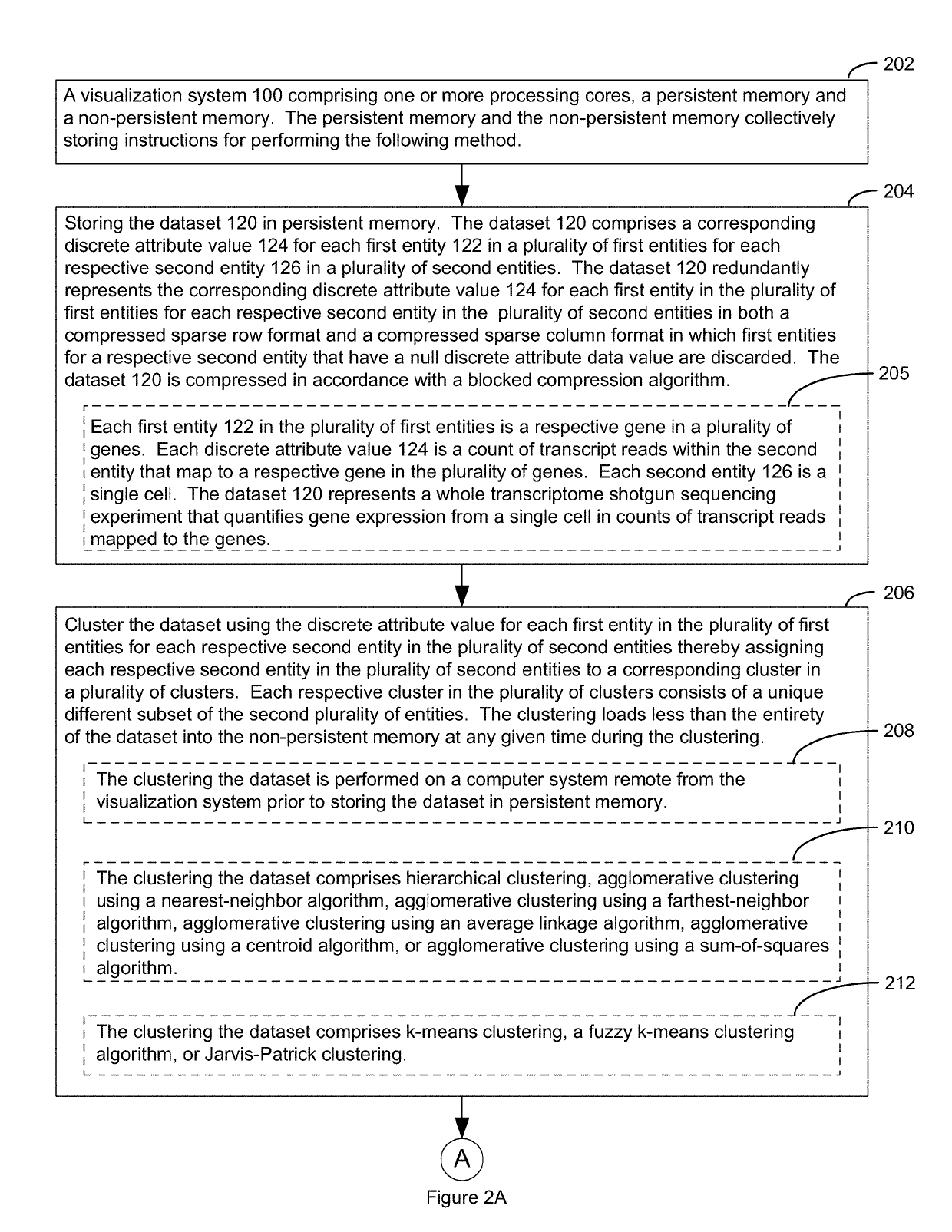Systems and methods for visualizing a pattern in a dataset
a dataset and dataset technology, applied in the field of dataset visualization, can solve the problems of large datasets, inability to easily load in their entirety into non-persistent memory, unsatisfactory processing time needed to discern patterns in such datasets, and affecting the ability to use simplistic statistical methods
- Summary
- Abstract
- Description
- Claims
- Application Information
AI Technical Summary
Benefits of technology
Problems solved by technology
Method used
Image
Examples
example
[0192]Referring to FIG. 15, an example visualization system 100 comprising a plurality of processing cores, a persistent memory and a non-persistent memory was used to perform a method for visualizing a pattern in a dataset. For this Example, the example visualization system 100 was a Lenovo ThinkPad with MICROSOFT WINDOWS 10 PRO, Model 243852U, 16.0 gigabytes of RAM memory, and Intel i7-3740QM CPM operating at 2.70 gigaHerz with 4 cores and 8 logical processors with the cell browser module 150 installed. The discrete attribute value dataset 120, consisting of mRNA whole transcriptome expression data from 8,390 different cells was stored in persistent memory. The dataset consisted of a corresponding discrete attribute value (mRNA transcript abundance) for each first entity in a plurality of first entities for each respective second entity (cell) in a plurality of second entities. The discrete attribute value dataset 120 redundantly represented the corresponding discrete attribute va...
PUM
 Login to View More
Login to View More Abstract
Description
Claims
Application Information
 Login to View More
Login to View More - R&D
- Intellectual Property
- Life Sciences
- Materials
- Tech Scout
- Unparalleled Data Quality
- Higher Quality Content
- 60% Fewer Hallucinations
Browse by: Latest US Patents, China's latest patents, Technical Efficacy Thesaurus, Application Domain, Technology Topic, Popular Technical Reports.
© 2025 PatSnap. All rights reserved.Legal|Privacy policy|Modern Slavery Act Transparency Statement|Sitemap|About US| Contact US: help@patsnap.com



